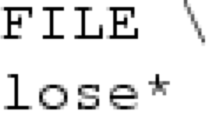Abstract
To understand the dynamics of a running program, it is often useful to examine its state at specific moments during its execution. We present memory graphs as a means to capture and explore program states. A memory graph gives a comprehensive view of all data structures of a program; data items are related by operations like dereferencing, indexing or member access. Although memory graphs are typically too large to be visualized as a whole, one can easily focus on specific aspects using well-known graph operations. For instance, a greatest common subgraph visualizes commonalities and differences between program states.
Access this chapter
Tax calculation will be finalised at checkout
Purchases are for personal use only
Preview
Unable to display preview. Download preview PDF.
Similar content being viewed by others
References
H. G. Barrow and R. M. Burstall. Subgraph isomorphism, matching relational structures and maximal cliques. Information Processing Letters, 4(4):83–84, 1976.
C. Bron and J. Kerbosch. Algorithm 457-Finding all cliques of an undirected graph. Communications of the ACM, 16(9):575–577, 1973.
E. R. Gansner and S. C. North. An open graph visualization system and its applications to software engineering. Software — Practice and Experience, 30(11):1203–1233, 2000.
T. Munzner. Drawing large graphs with h3viewer and site manager. In Graph Drawing’ 98, volume 1547 of Lecture Notes in Computer Science, pages 384–393, Montreal, Canada, Aug. 1998. Springer-Verlag.
F. Tip.A survey of program slicing techniques. Journal of Programming Languages, 3(3):121–189, Sept. 1995.
R. Wilhelm, M. Sagiv, and T. Reps. Shape analysis. In Proc. of CC 2000: 9th International Conference on Compiler Construction, Berlin, Germany, Mar. 2000.
A. Zeller and R. Hildebrandt. Simplifying and isolating failure-inducing input. IEEE Transactions on Software Engineering, 28(2), Feb. 2002. To appear.
A. Zeller and D. Lütkehaus. DDD-A free graphical front-end for UNIX debuggers. ACM SIGPLAN Notices, 31(1):22–27, Jan. 1996.
Author information
Authors and Affiliations
Editor information
Editors and Affiliations
Rights and permissions
Copyright information
© 2002 Springer-Verlag Berlin Heidelberg
About this paper
Cite this paper
Zimmermann, T., Zeller, A. (2002). Visualizing Memory Graphs. In: Diehl, S. (eds) Software Visualization. Lecture Notes in Computer Science, vol 2269. Springer, Berlin, Heidelberg. https://doi.org/10.1007/3-540-45875-1_15
Download citation
DOI: https://doi.org/10.1007/3-540-45875-1_15
Published:
Publisher Name: Springer, Berlin, Heidelberg
Print ISBN: 978-3-540-43323-1
Online ISBN: 978-3-540-45875-3
eBook Packages: Springer Book Archive




